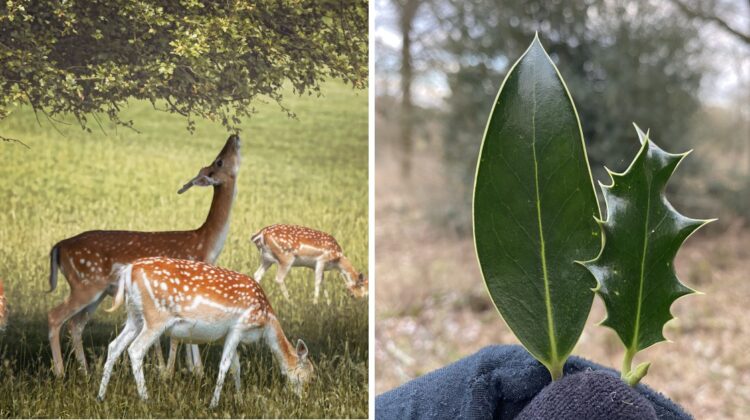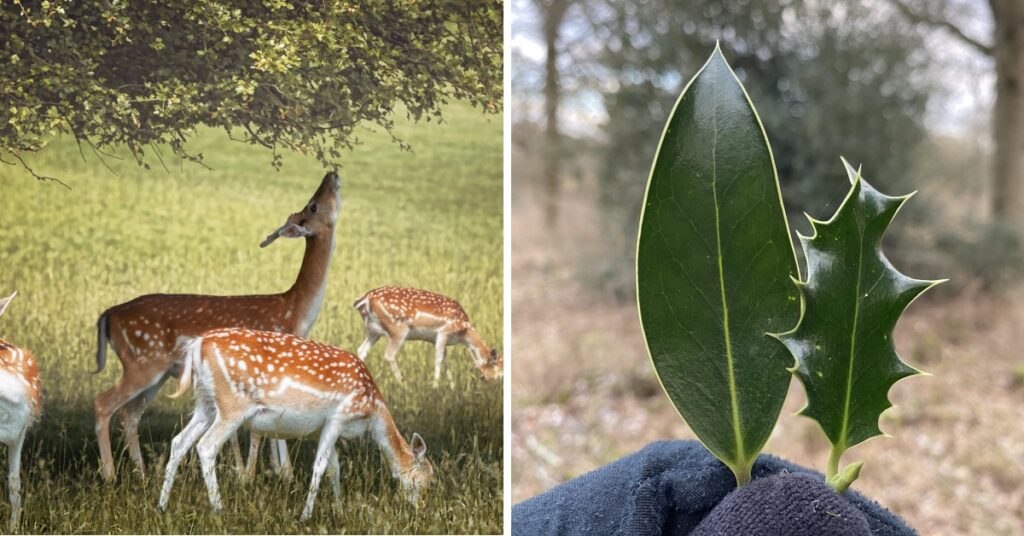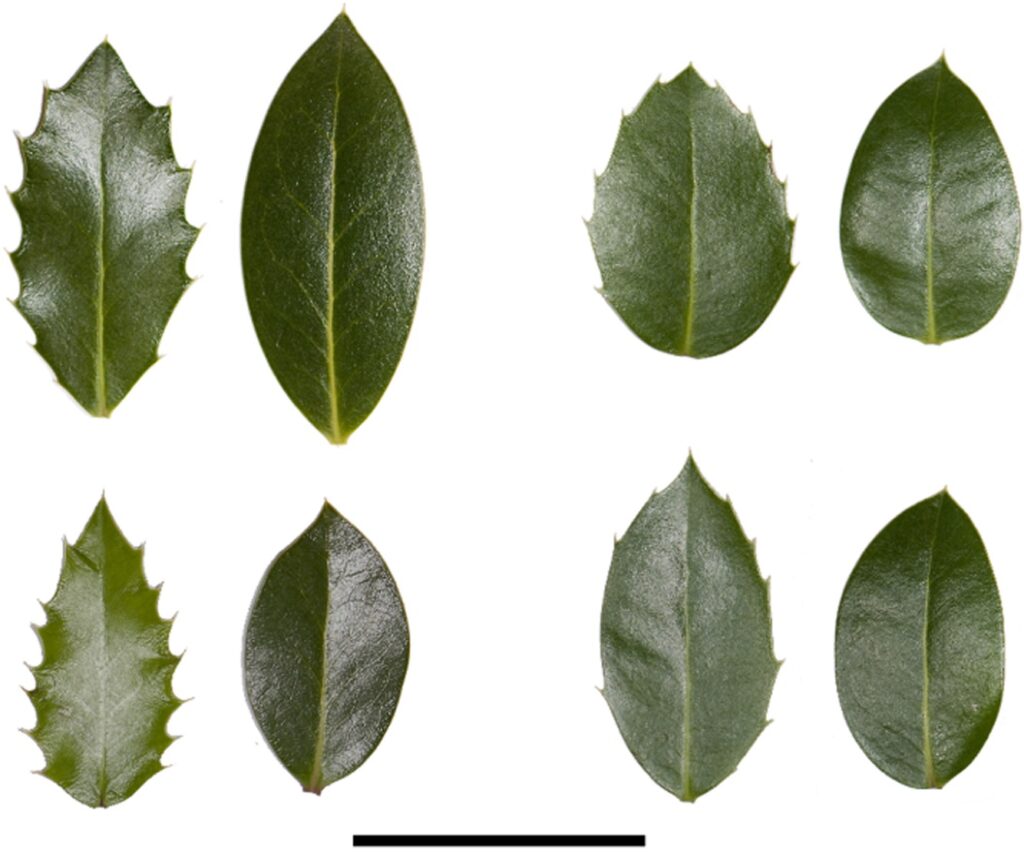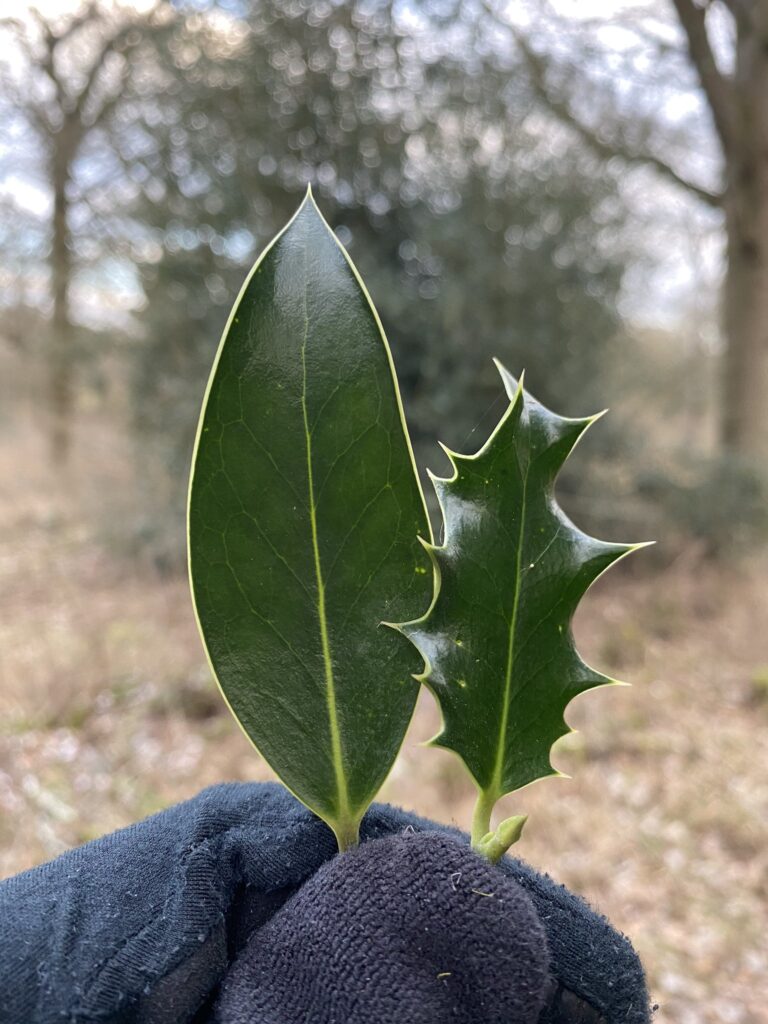
Holly trees (Ilex aquifolium) are well known for their attractive evergreen foliage and bright red berries, which make them a popular choice for gardens and landscaping. However, they are also known for being a favorite food of deer, who love to nibble on the tender leaves of the lower branches.

Interestingly, holly trees have evolved a unique defense mechanism to protect themselves from hungry deer. When the leaves of a holly tree are nibbled by deer, the tree responds by producing spiky, prickly leaves on the lower branches, which are less palatable to the deer. This allows the tree to continue to grow and thrive, even in the face of constant herbivore pressure.
The spiky leaves that grow in response to deer browsing are called “bristles,” and they are much tougher and more rigid than the smooth, glossy leaves that holly trees produce under normal conditions. The bristles are also less nutritious than the normal leaves, which means that deer are less likely to eat them.

However, holly trees don’t just produce bristles in response to deer browsing. They also use this defense mechanism to protect themselves from other threats, such as insects and disease. When a holly tree is under attack from pests or pathogens, it may produce bristles as a way to discourage further damage.
The production of bristles by holly trees is a fascinating example of how plants have evolved to adapt to their environment. By producing spiky leaves in response to deer browsing, holly trees are able to protect themselves and continue to grow and reproduce, even in the face of constant herbivore pressure.

If you have a holly tree in your garden and you notice that the lower branches are covered in spiky leaves, you can thank the deer for helping to create this unique and effective defense mechanism. And if you’re a deer looking for a tasty snack, you might want to think twice before nibbling on a holly tree!

Leave a Reply